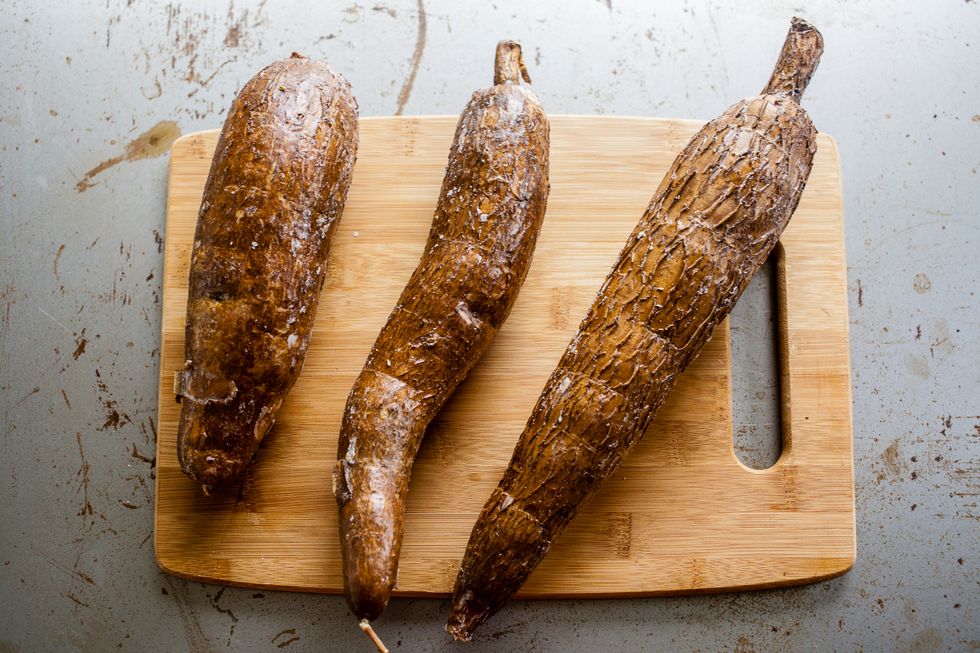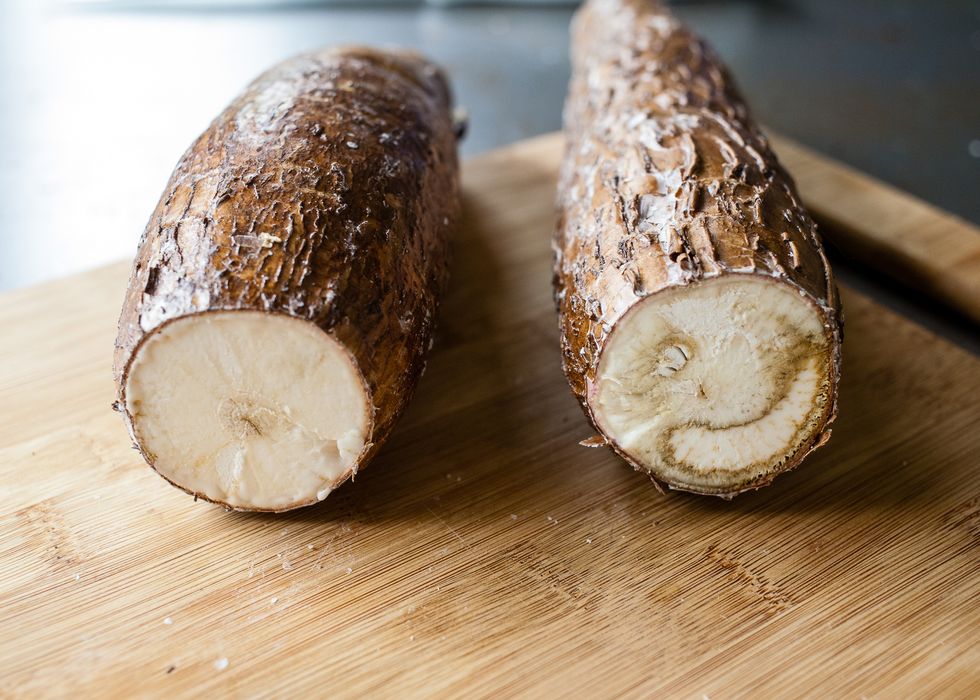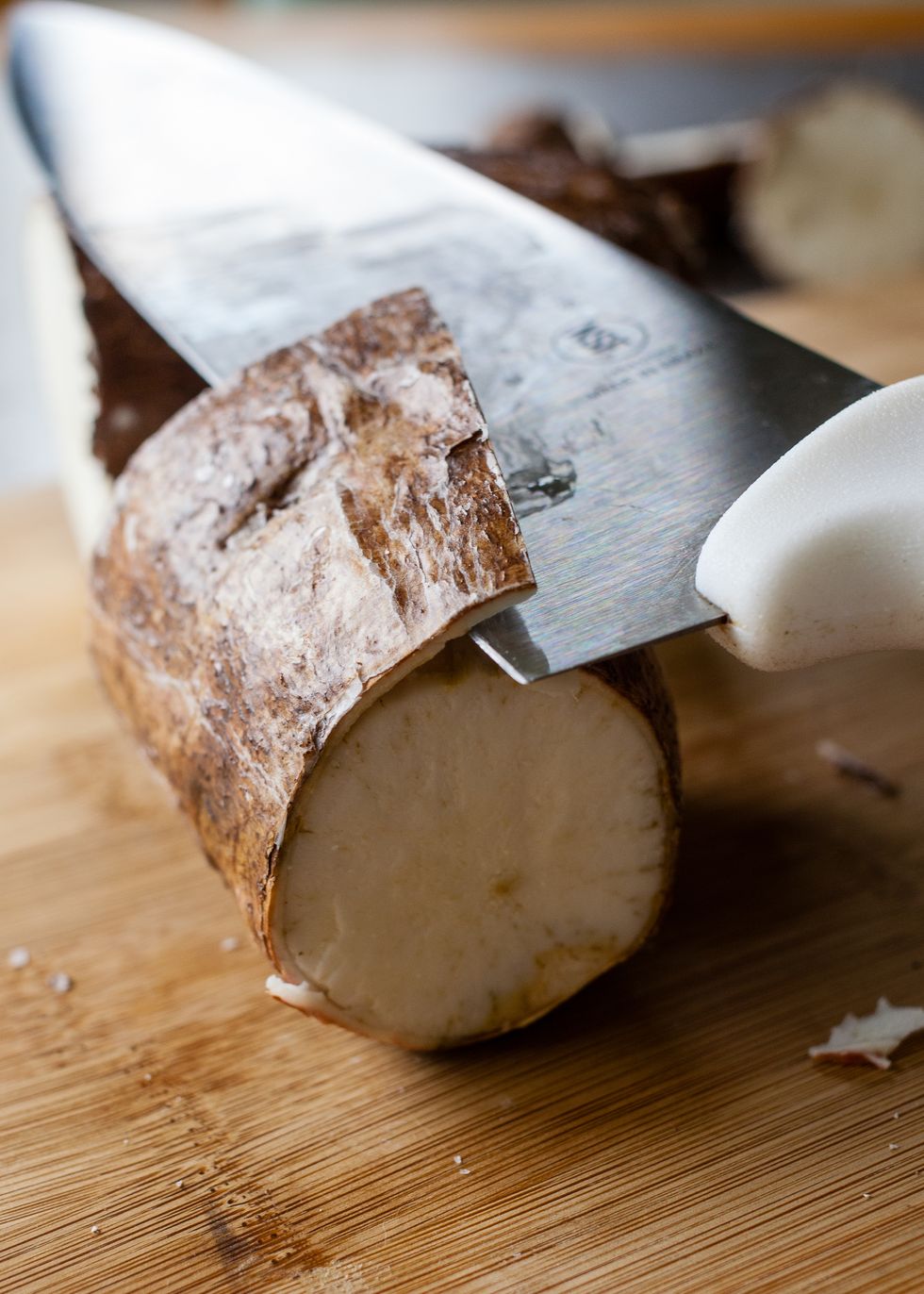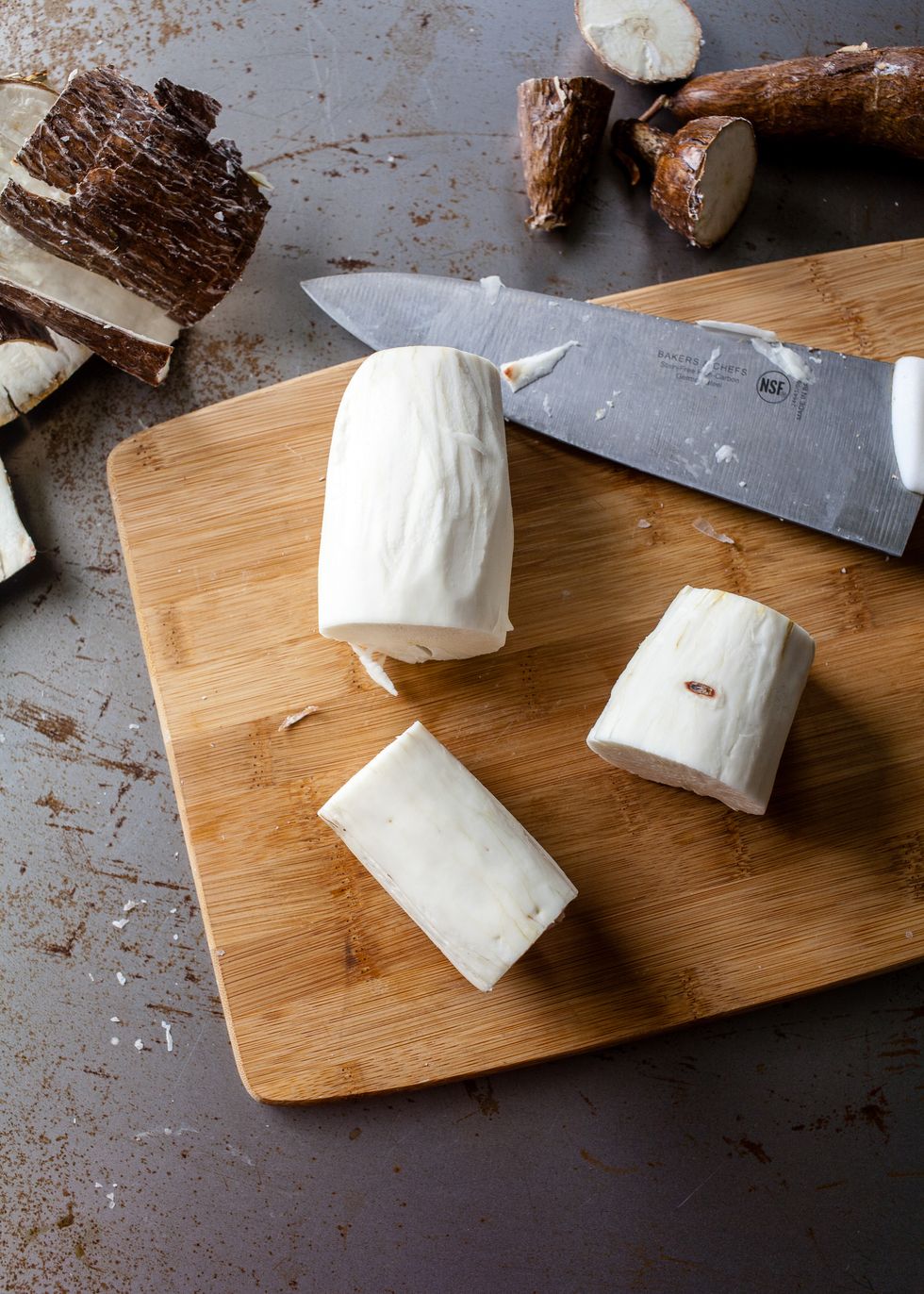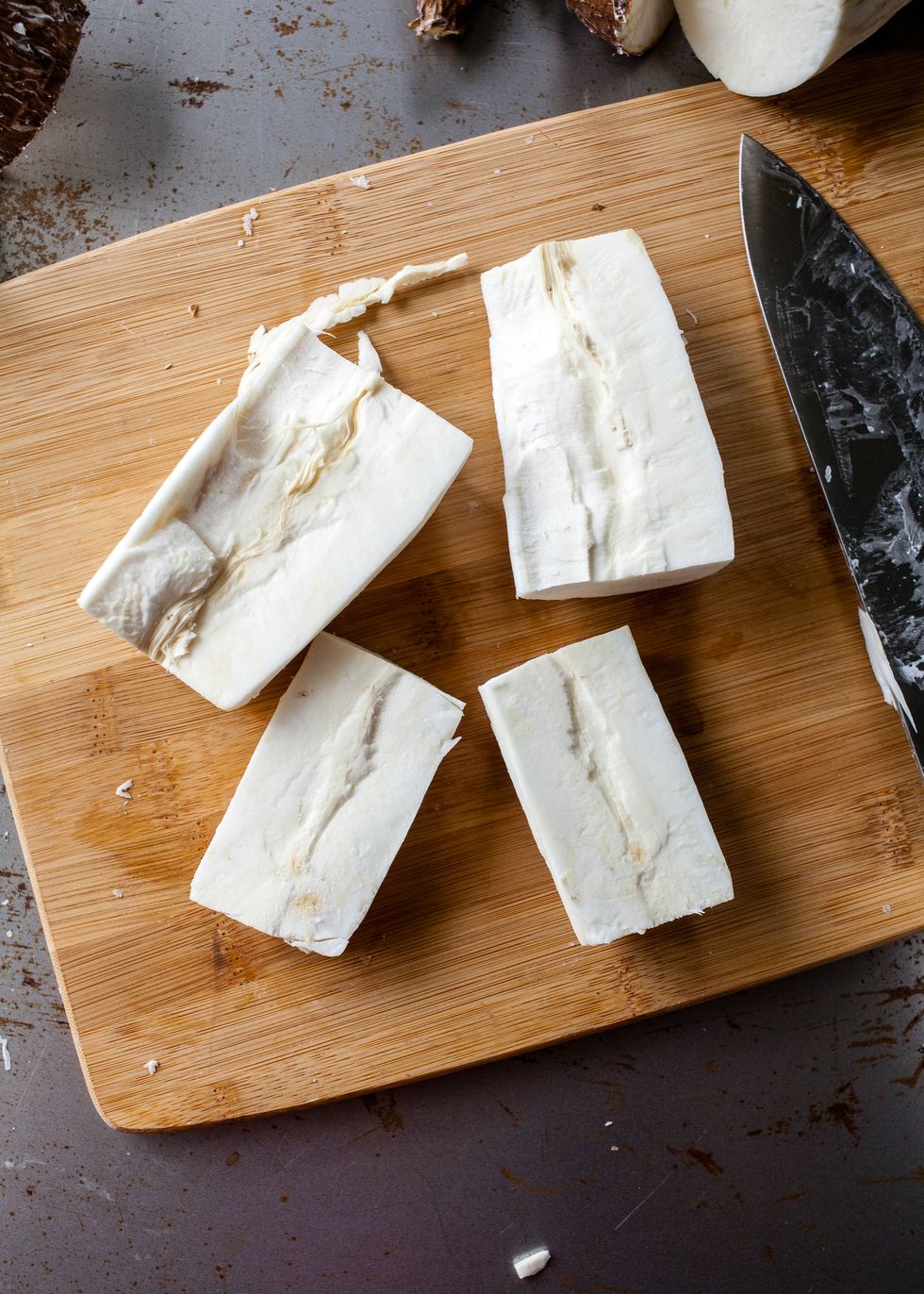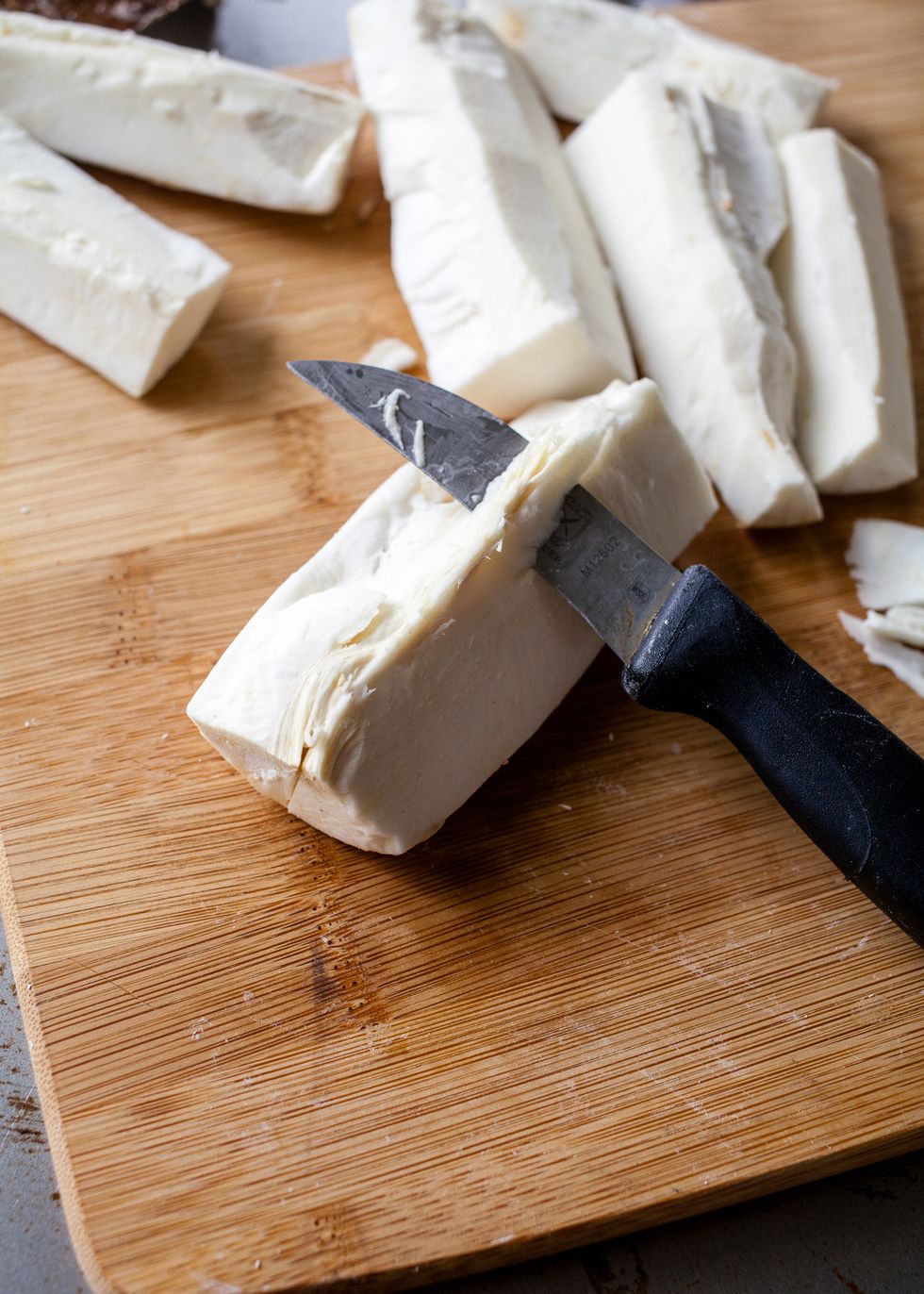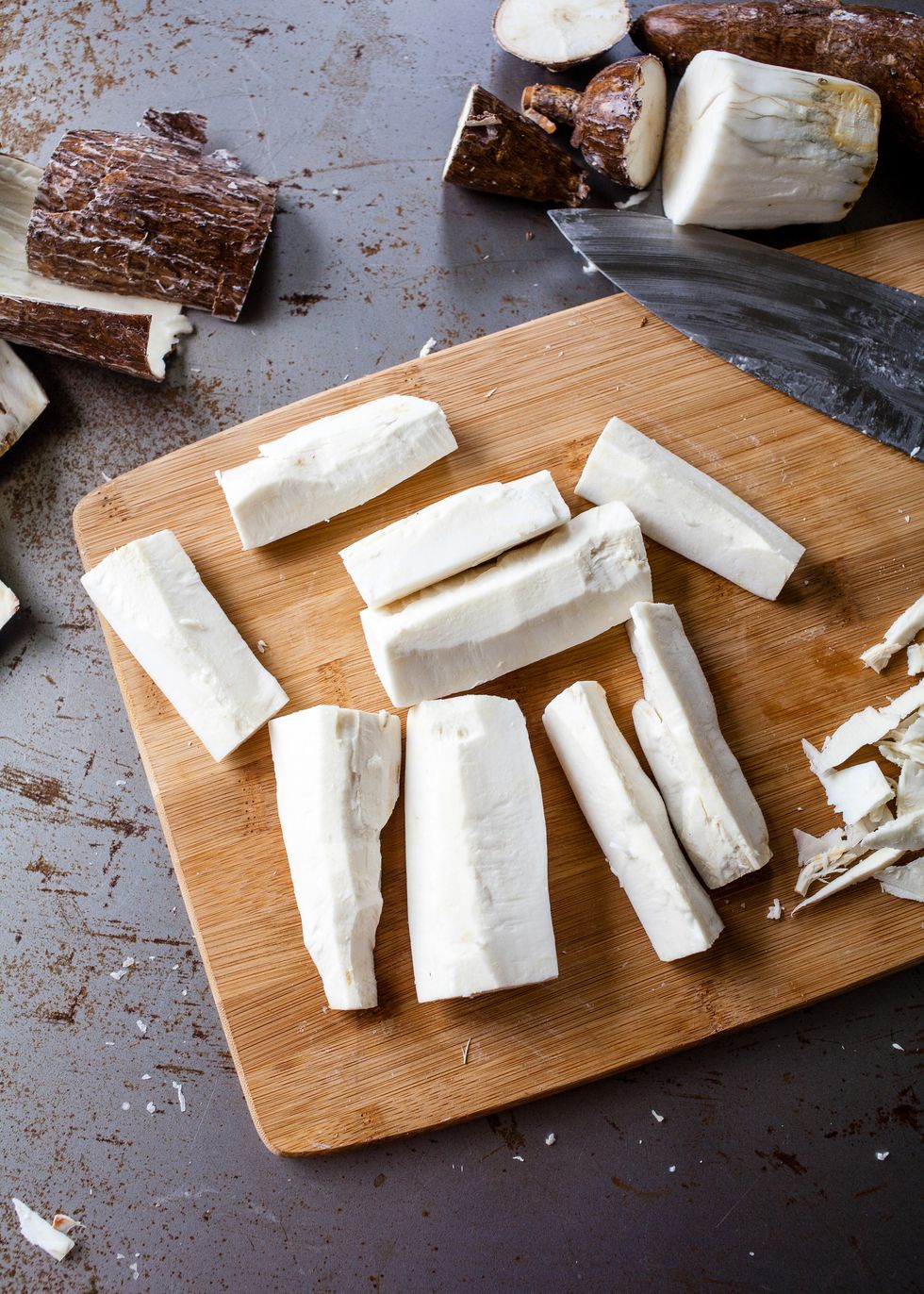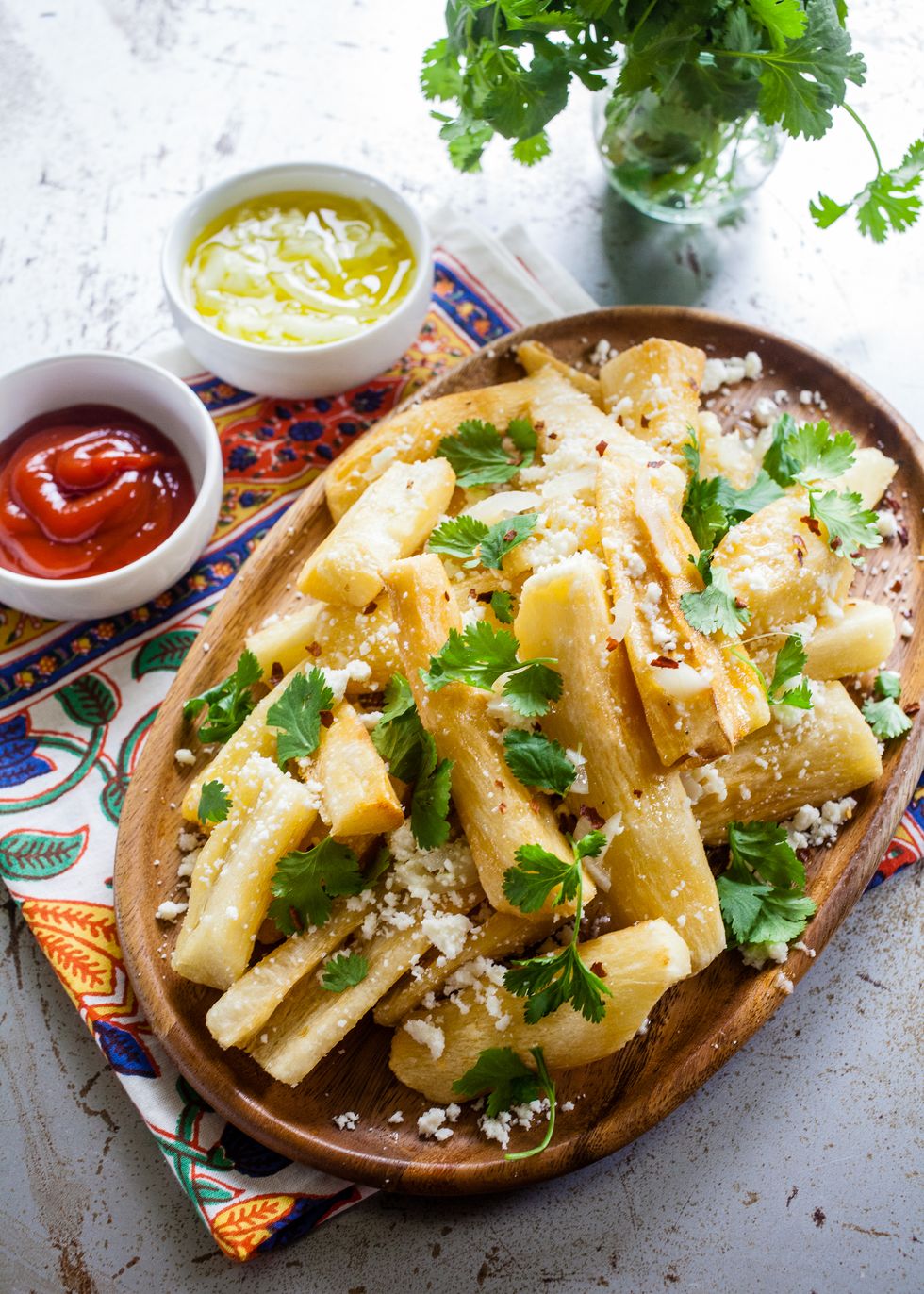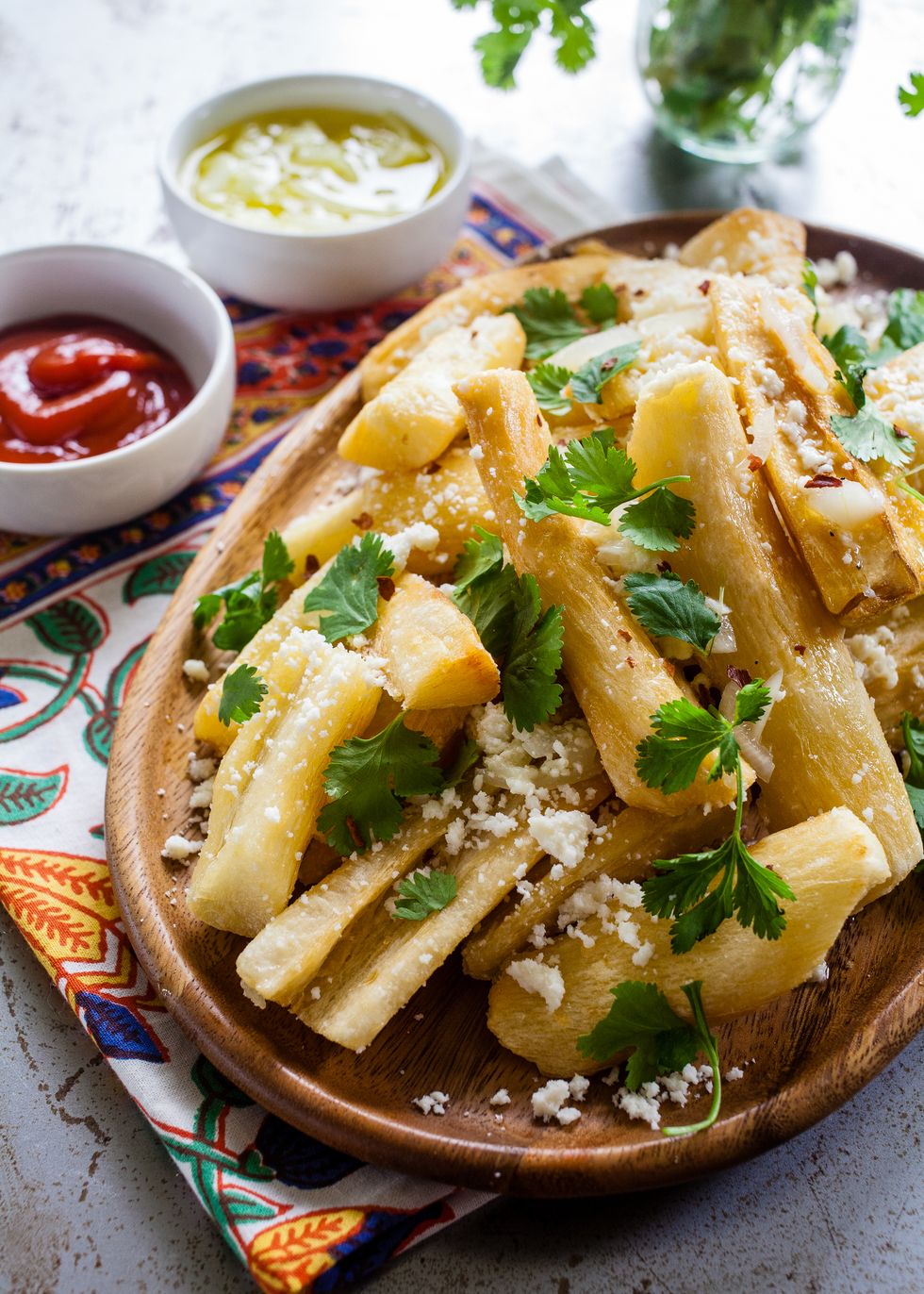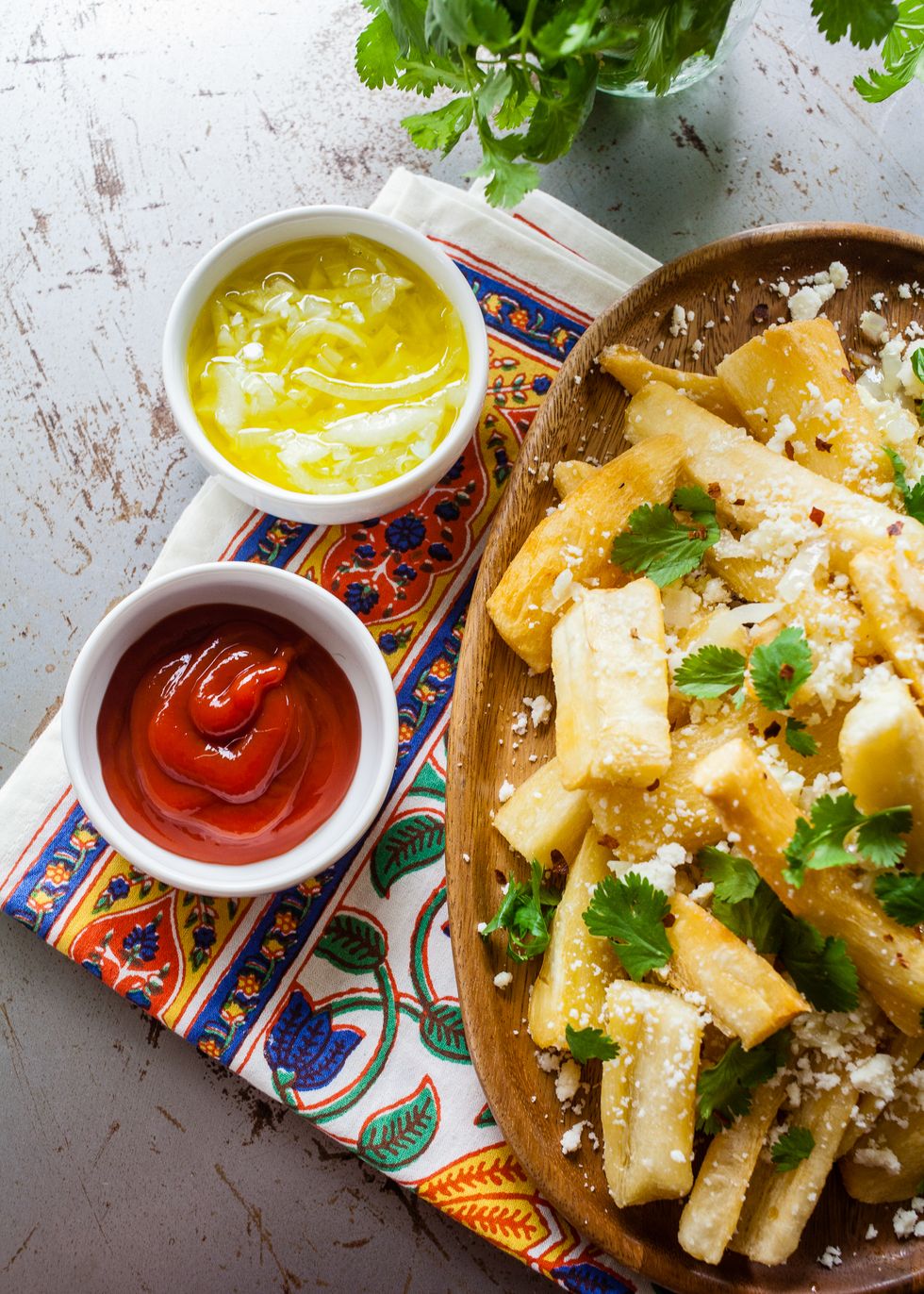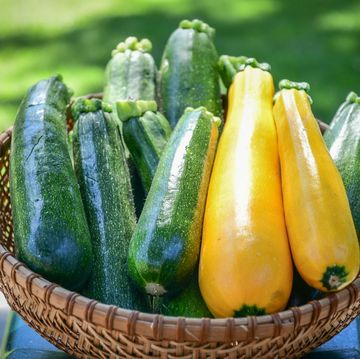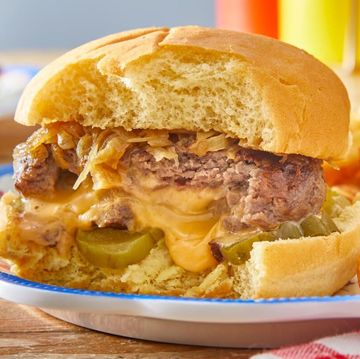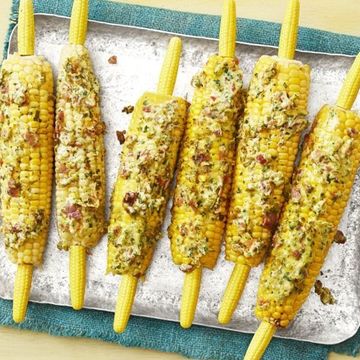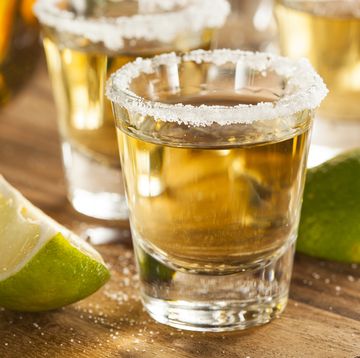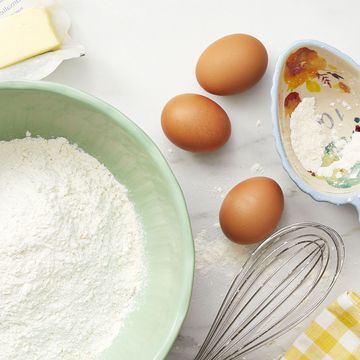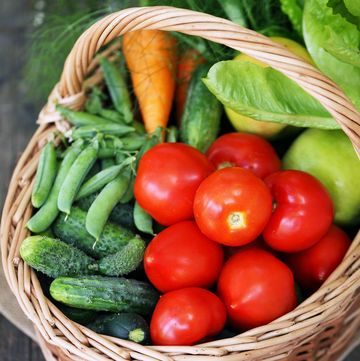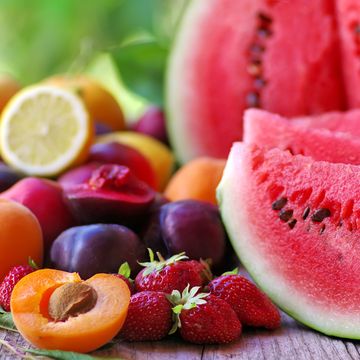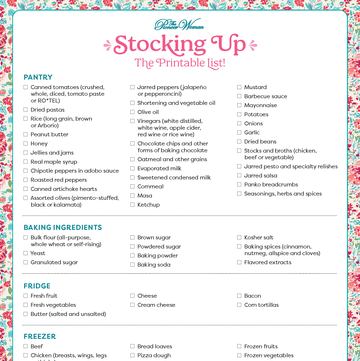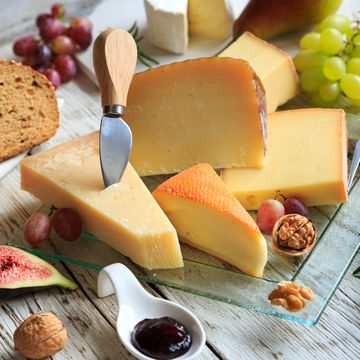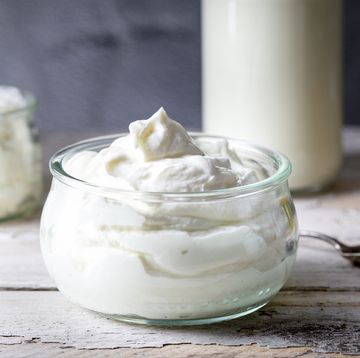What is cassava or yuca?
Cassava or yuca (joo-kah) is a starchy tubular root like a potato, and is not to be confused with yucca (yuck-ah), which is an unrelated fruit-bearing shrub. Believe it or not, this is where we get tapioca: the cassava root is dried and ground to a powder to make tapioca. Yes, that tapioca pudding or bubble tea all started with yuca! Other names for cassava or yuca are Brazilian arrowroot and manioc.
What does it look like?
It is long and tapered at the end, with a brown, almost bark-like skin and bright white flesh. It averages between 6 to 12 inches long and 2 to 4 inches in diameter. When purchased at grocery stores, yuca is covered in wax to help preserve it during its long journey.
Where does it come from?
Yuca is found all year round and grows in tropical and subtropical regions around the world, including Asia, Africa, Caribbean, and Latin America.
I can’t speak much for yuca in other countries, but in Puerto Rico, it’s a significant part of our food culture and makes regular appearances at the dinner table. Unlike plantains, yuca is native to Puerto Rico and was the main crop of the indigenous people, the Taínos. The crop was so abundant and significant to them that their major god was Yúcahu, which means spirit or giver of cassava. It was believed that Yúcahu lived at the top of El Yunque, Puerto Rico’s rainforest, and produced the rains that gave life to grow yuca.
Where do I buy it?
In the U.S. you can find yuca in the produce section of most grocery stores. If you can’t find it at your local grocery store, check your local Latin or Asian grocery.
It can also be found peeled and cut in the frozen food section.
When buying yuca, inspect it for any cracks or signs of mold. The flesh of yuca should be white thoughout. The only way to see the flesh it to break off the end of the yuca. (It may seem odd and almost inappropriate, but the fact is that you’re just making sure you’re getting good yuca. If the flesh isn’t white, then the yuca has gone bad and should be pulled from the shelves.) If you see black specks, lines or discoloration that run throughout, the yuca is past its prime. If any discoloration or spots are restricted to one part of the yuca, you can just cut it away.
How do I peel it?
When I first tried to peel yuca, it took me forever! I had no clue. I thought that it would peel like a potato, so I put a potato peeler to the yuca. Big mistake! It took forever and my hands hurt like crazy by the time I was done. When I finally learned how to properly peel yuca (thanks, abuela), it was so easy, I wanted to face-palm myself.
First, you need a large sharp and strong knife. Cut the yuca into 2- to 3-inch segments.
Look at the edge of the yuca slice and you will see a ring around it. This is the skin of the yuca.
Score the skin deep enough to cut into it.
Carefully and gently work the edge of a knife under the skin. Continue to wiggle and press the knife to separate the skin of the yuca from the flesh.
And there you have it! You’ve peeled yuca! Pretty easy, right? But you’re not quite done yet.
Cut the yuca pieces in half to expose the stem that runs through the center. It looks like a small twig or vine.
You can dig these out with a V cut, or cut the yuca into quarters and easily cut it away. It’s ok to leave the stem if you’re feeling lazy, but I don’t enjoy eating around it.
You can now prepare the yuca or bag it and freeze it for a future use.
How do I eat it?
Just like potatoes, fried, mashed or boiled yuca can be enjoyed in many ways. However, before eating yuca, it needs to be boiled first. Do not eat it raw. You may have heard that yuca contains cyanide. This is true, but there is no cause for concern when purchasing yuca in the U.S. The yuca sold here is the sweet variety found in the Caribbean and Central America. The toxin levels in sweet yuca are low enough that peeling and cooking the yuca removes those toxins. The bitter variety of yuca, which comes from Africa, is higher in cyanide and requires hours of soaking and cooking before eating. In other words, if you are buying it here in the U.S., you are good with just peeling it and cooking it until tender.
What does it taste like?
It’s very similar to potatoes, but lighter in flavor and texture. Honestly, if you like potatoes (and who doesn’t!), then you will enjoy yuca. I love it boiled in salt and served with an onion and garlic mojo. I also love it deep fried!
I recently ate with some friends at an Asian fusion restaurant here in Dallas called Chino Chinatown. We started with an order of their yuca fries. They were fried in duck fat and served with Sriracha ketchup and cotija cheese. They were amazing! I knew I had to recreate a version of this recipe. And since we are talking about yuca, what better time than now to share this recipe!
What I love about yuca fries (besides that fact that I just love yuca) is that they are so crispy on the outside and light and fluffy on the inside. This makes them dangerously addictive.
The salty cotija and spicy Sriracha ketchup are a great addition to yuca fries but I have to have some mojo with my yuca. So I toss the fries in a bit of mojo and also served it on the side as a dipping option.
I never would have thought of topping yuca fries with cotija but it is genius! It adds the perfect salty element, and the mojo gives it a little tanginess. Dip the fries in the Sriracha ketchup and you have a real winner. If you want to take these over the edge, top them with some carnitas!

